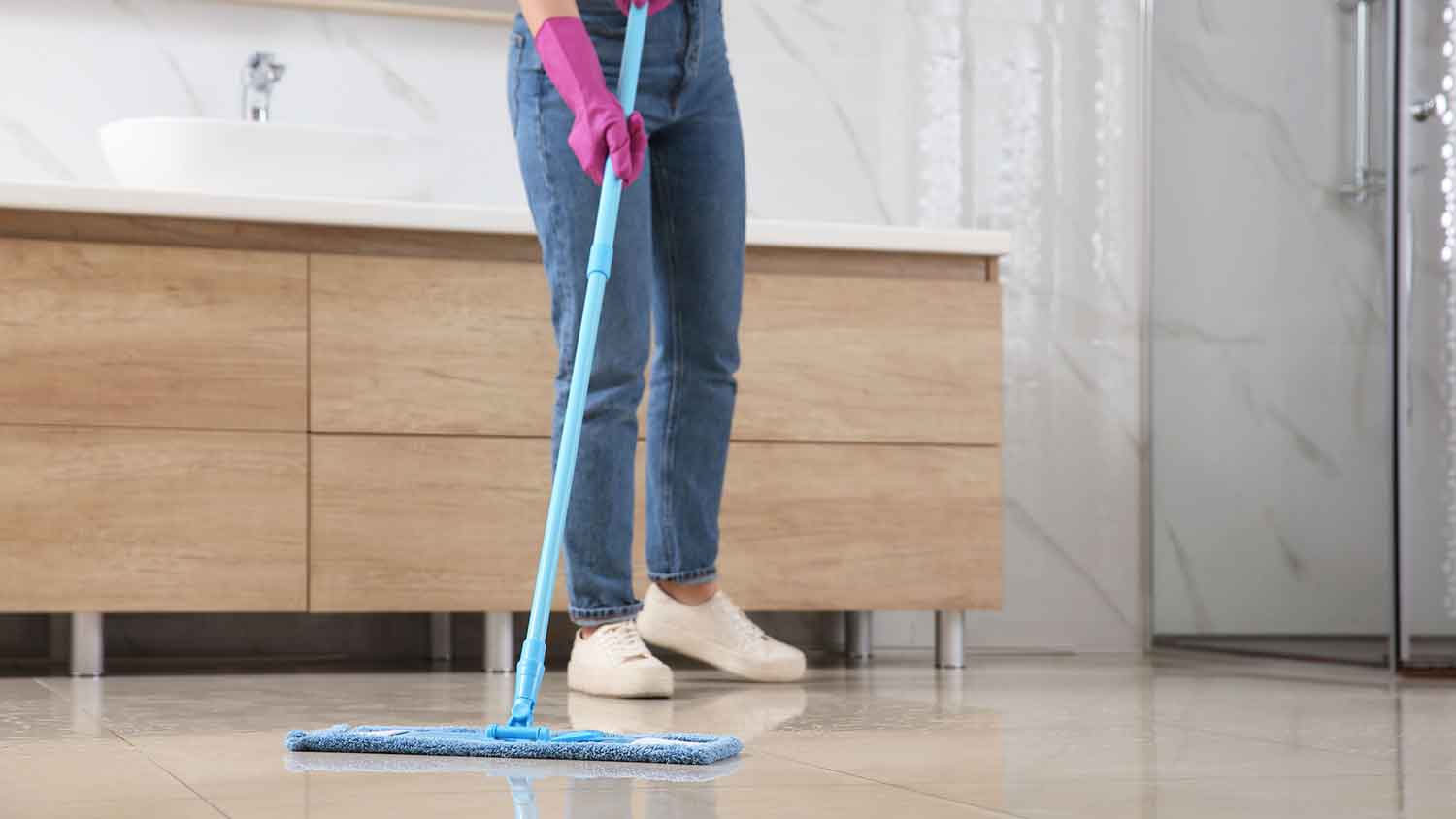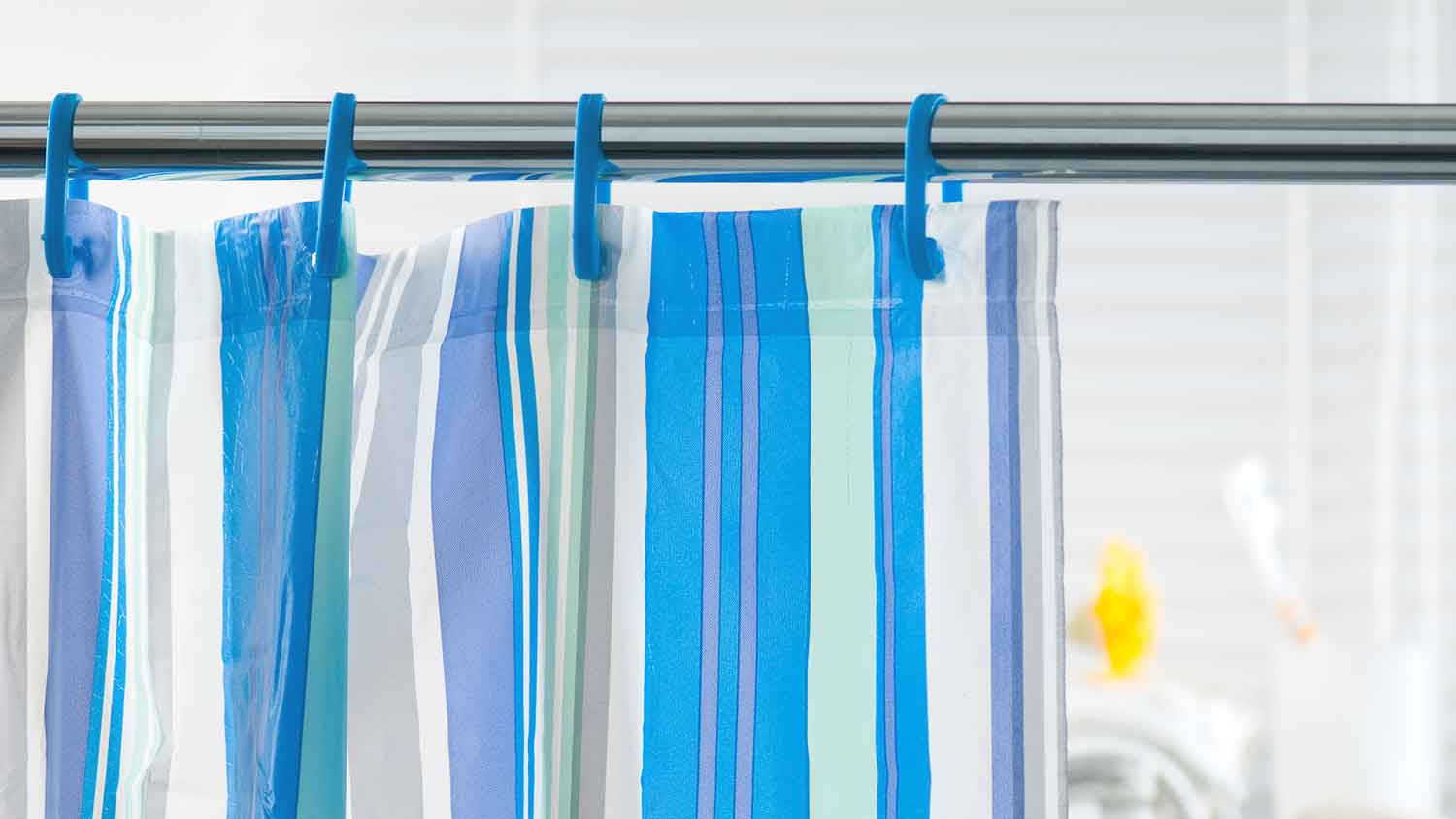
Clean walls are an important part of a well-kept house. Use this wall cleaning cost guide to see what it would cost to hire a professional to get the job done.
A regular bathroom cleaning schedule can keep this room fresh and clean


You should clean most bathroom surfaces once per week, including the sink, tub, shower, and toilet.
Some bathroom cleaning tasks can be tackled monthly, such as scrubbing the tub jets, shower curtain and liner, and ventilation fan.
A daily wipedown of heavy-traffic surfaces can keep your bathroom sparkling clean and sanitary.
Consult a professional house cleaning service for expert advice on a bathroom cleaning schedule.
Bathrooms are some of the most frequently used rooms in our homes, and they’re rooms that have the potential to get the dirtiest. Knowing how often to clean the bathroom can help you keep it looking and smelling great. Different surfaces and parts of your bathroom should be cleaned at different intervals, so let’s explore what should be cleaned when.

Most bathroom cleaning tasks should be performed on a weekly basis in order to keep this room looking and smelling its best and to maintain a sanitary environment.
The bathroom sink gets a lot of use, and you might not think that something that sees so much soap and water would need frequent cleaning. But because the sink often stays damp, it can be a breeding ground for bacteria, and it can also accumulate toothpaste residue, dust, and other debris. Once a week, use an all-purpose cleaner and a sponge or rag to return your sink to a pristine state, paying special attention around the drain and under the sink’s rim. Don’t forget to wipe down faucets as well.
The bathroom countertop also needs thorough cleaning, even if you keep it mostly clear. Wipe down all surfaces with cleaner and a rag or sponge, including around sink faucets and in any areas abutting the wall where dust, debris, and moisture can accumulate.
The toilet can be one of the most unsanitary places in your home, so you want to be sure to keep it as clean and germ-free as you can. Clean your toilet thoroughly once a week, using an antibacterial or disinfecting cleaner on all exterior surfaces as well as the bowl, seat, and lid.

Even the place you go to get clean gets dirty if you don’t keep up with it. Clean your tub and shower every week, spraying and scrubbing all surfaces with cleaner, wiping down any bottles or containers, and removing water or mineral stains from glass shower doors, if applicable.
The bathroom floor sees a lot of traffic, and a weekly clean helps keep it spotless and sanitary. Be sure to sweep or dust mop first to pick up any hair and dirt before mopping with hot water and cleaner.
Remove trash from the bathroom on a weekly basis. After emptying the trash can, wipe down the interior and exterior surface to keep it clean and dust-free; doing this regularly can also help stave off odors.
All bath towels, hand towels, bath mats, and washcloths should be laundered at least weekly, although you may want to do so more frequently if your bathroom is particularly humid and towels don’t dry quickly, or if daily usage is heavy enough to necessitate switching them out more often.
You’ll want to see the smile on your face after all your hard work cleaning the bathroom from top to bottom, so wipe the mirror down with glass cleaner and a microfiber cloth for a streak-free reflection.
The combination of moisture, dust, and even the personal care products used in the bathroom can cause walls to become sticky and dingy over time. Wash walls from top to bottom using a rag and hot, soapy water.
Bathroom storage spaces also need to be kept up with. Once a month, go through cabinets and drawers and organize items, discard expired products, and wipe down interior and exterior surfaces to remove dust and residue.
If you use a shower curtain and liner, they should be washed at least monthly to discourage mildew growth. Most curtains and liners can be machine-washed, but check the manufacturer’s tag to be sure. Fabric curtains can usually go in the dryer, and plastic liners can be hung back up to dry.
Mildew can also thrive in your tub and shower’s caulk or grout. Give these materials a deep clean once a month with a diluted bleach solution, hydrogen peroxide, or another cleaner for grout or caulk and a small scrub brush or old toothbrush.
Ventilation fans keep air flowing in the bathroom to help prevent the problems that come with an enclosed, damp space, but they can accumulate a lot of dust and moisture, leaving a gummy or sticky residue on vent covers and fan blades. Wipe or carefully vacuum these surfaces monthly to keep your fan working efficiently.
If you have a jetted bathtub, clean your tub’s jets every month to make sure you’re not recirculating build-up or bacteria into your bathwater. Keeping your jetted tub clean can also help keep it working its best and reduce the potential for problems and costly repairs.
A daily top-to-bottom bathroom cleaning simply isn’t feasible for most people, nor is it necessary. But there are a few easy tasks you can do on an everyday basis that take almost no time at all and will help you spend less time doing a deep clean later on.
Put away any items left on the counter.
Wipe up spills or splashes in the sink area.
Check if soap, toilet paper, tissues, and other supplies need to be refilled or replaced.
The cost to hire a cleaning service can range between $120 and $235, with an average cost of $175 or $50 per hour. It all depends on how large your home is, the level of labor you need (i.e., how messy it is), and your location. These prices are also reflective of only a standard clean, as a deep clean can cost upwards of $375.
Cleaning your own house can save you a lot of money, but it depends on how much time you have to invest in your home cleaning. You can do everyday cleaning tasks to help mitigate how messy your home is, but if not kept up, you’ll have to invest a lot more time.
Depending on the state of your home or how much convenience you want, hiring a professional cleaning service might be worth the time saved. If a full-scale cleaning service is out of your budget, but you need extra help, do some of the bigger cleaning jobs yourself, and then hire a cleaning service to finish what you could not.
From average costs to expert advice, get all the answers you need to get your job done.

Clean walls are an important part of a well-kept house. Use this wall cleaning cost guide to see what it would cost to hire a professional to get the job done.

A moldy dishwasher can cause unpleasant smells and unsanitary dishes. Learn how to clean a moldy dishwasher with this DIY guide.

Keep on top of the mess in one of the busiest rooms in your home with our daily, weekly, monthly, and seasonal living room cleaning checklists.

Fans help us stay cool during hot days but are also magnets for dust and dirt. Follow this guide and learn how to clean a fan in your home.

After a construction project, getting your home clean and living-ready is a top priority. Learn who to hire for post-construction cleanup for the best results.

Get organized with a checklist that walks you through how to prepare your home for the holidays—it’s the perfect way to make sure nothing is forgotten.